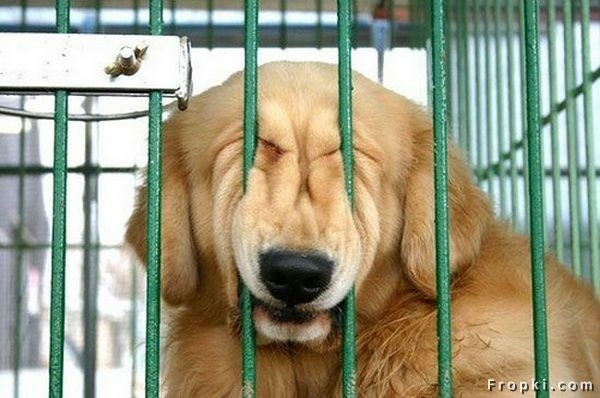Ask the Vet with Dr. Tina Chou! – Crate Training
QUESTION:
I just adopted a 2-month-old golden-doodle puppy. I started house-training her yesterday using a crate, but it is harder than I thought! She whined for hours after I placed her in the crate for the night. I even took her out for a long walk to do her business prior to placing her in the crate. Are there any tips on making crate training easier ?
ANSWER:
THE BENEFITS: Crate training is a wonderful tool when used properly to aid in housetraining i.e. preventing destruction of furniture, house soiling and separation anxiety (such as the whining your puppy exhibits when she is left in her crate).
GENERAL INFORMATION: The goal of crate training is that your puppy learns to love resting in her crate. A crate should be like her den, as it provides a safe-haven during times of stress she can retreat to and/or comfortably rest in when she is tired.
In general, during the day puppies can be crated the same number of hours as their age in months and then throughout the night when they are sleeping. For e.g. a 2 month old puppy can be crated 2 hours at a time during the day, but she can be crated throughout the night for sleeping if she has not had a huge drink of water just before going in.
TIPS TO TRY AND WHAT TO DO: It is normal for puppies to whine the first few times they are crated as they are not used to having restricted access to their family. However, it is important that puppies learn that being separated or confined is okay and routine.
The crate should never be used as a punishment tool and should be introduced gently with many good things associated with it such as placing a favourite blanket and toys inside. Provide your puppy with something positive while she is in her crate. You can place treats and some of your puppy’s meal in the crate every time you put her in, so that she associates being in the crate with positive experiences.
If she starts whining when she is in the crate, it is important to IGNORE the behaviour. Each time you respond in any way, you are in fact rewarding the behaviour you are trying to eradicate and she will learn to whine as a way to grab your attention. When you IGNORE the whining you are sending a message to your puppy that whining is a fruitless exercise. If the crate is in a room with a door, shut the door (if it will help attenuate the noise and/or prevent you from reacting to her whines) and leave the vicinity.
Avoid letting your puppy out of her crate when she is barking or whining as this rewards the barking/whining behaviour and it will get worse. Instead, wait until she is quiet to let her out.
You can also reward your puppy for quiet behaviour by tossing treats into her crate when she is quiet or opening the door and giving her attention when she is quiet.
If you are diligent about the crate training early on, the whining should stop within a week. If you reward your puppy by letting her out when she whines, the whining could develop into serious anxiety or barrier frustration that prevents you from being able to leave your dog alone in another room or alone in the house.
REMEMBER: Never reward and therefore reinforce undesirable behaviour—always reward desirable quiet time.
Puppy training in general can be challenging at times, but successful training allows for a more fulfilling relationship between you and your puppy/future dog.
If you are unsure whether the amount of whining is normal. Consult your veterinarian before the whining develops into an expensive and noisy problem.


Leave a Reply